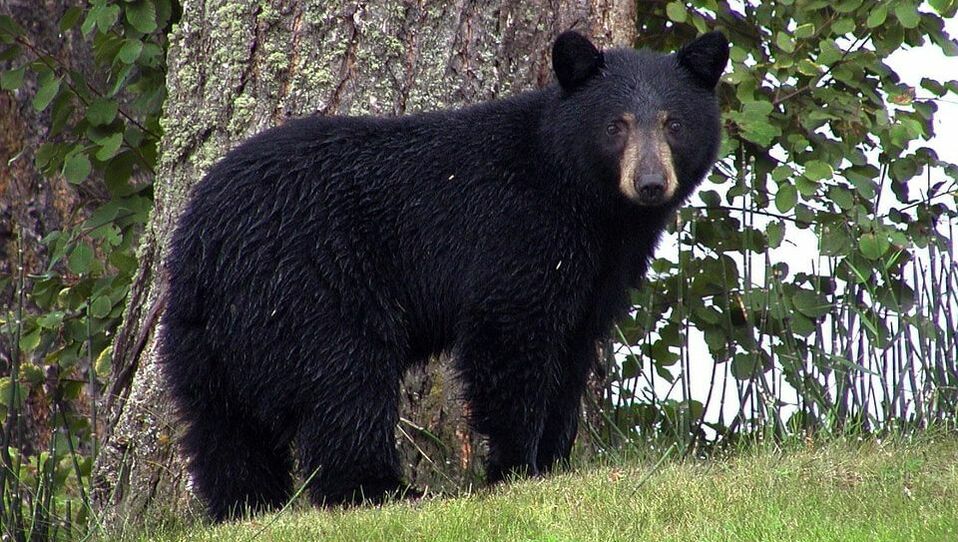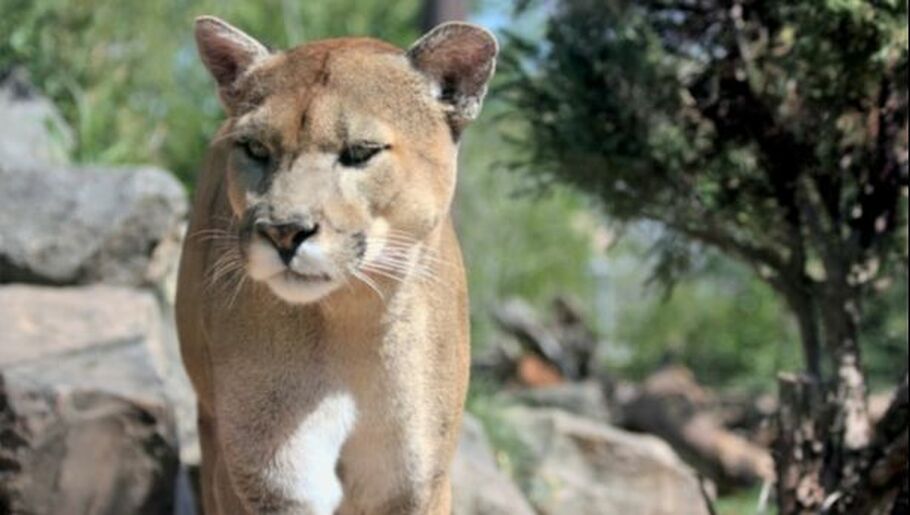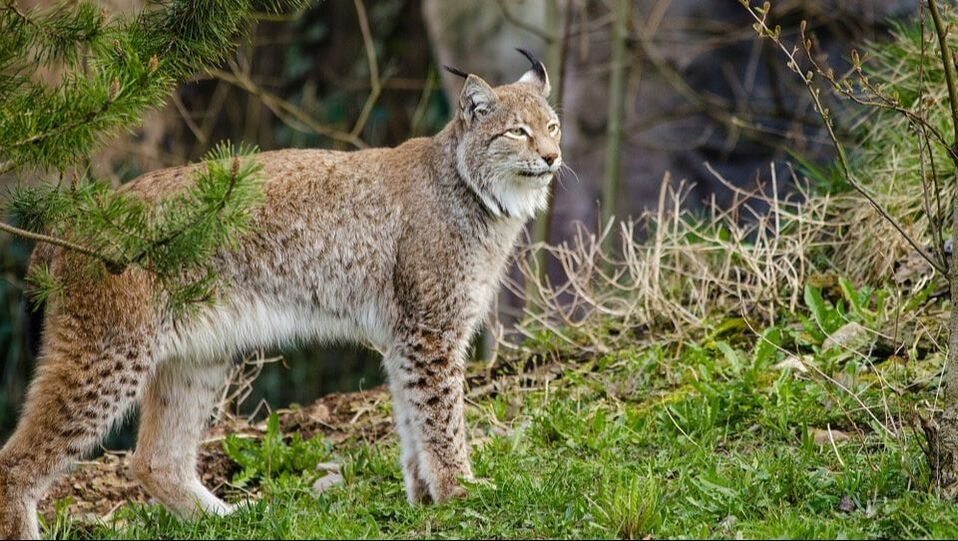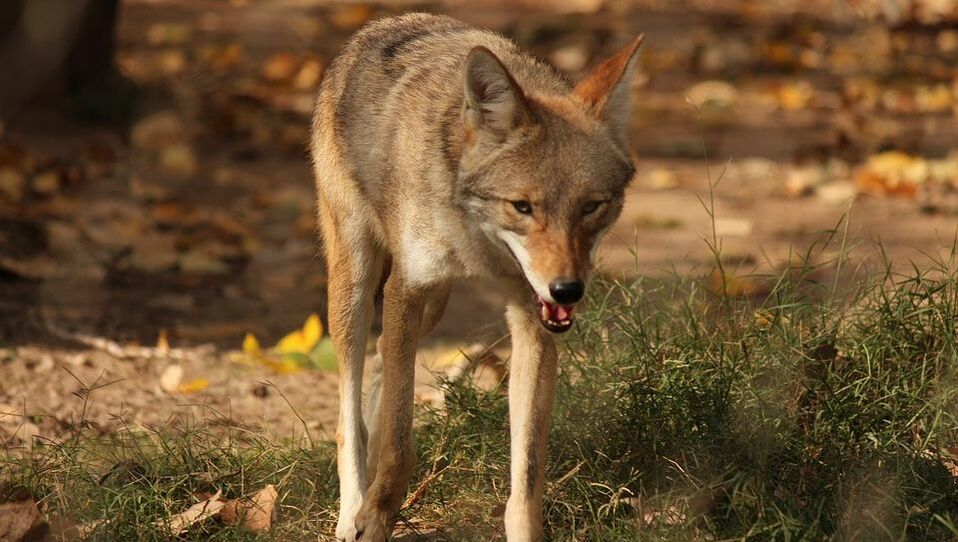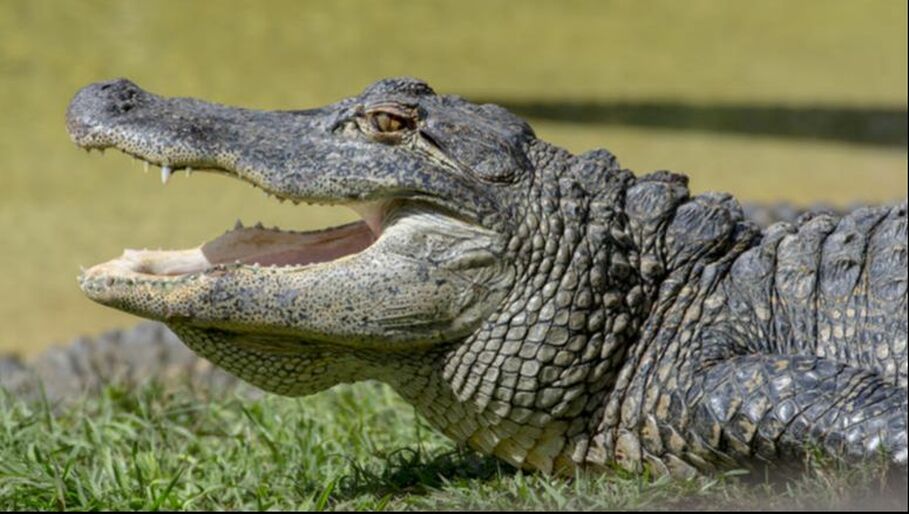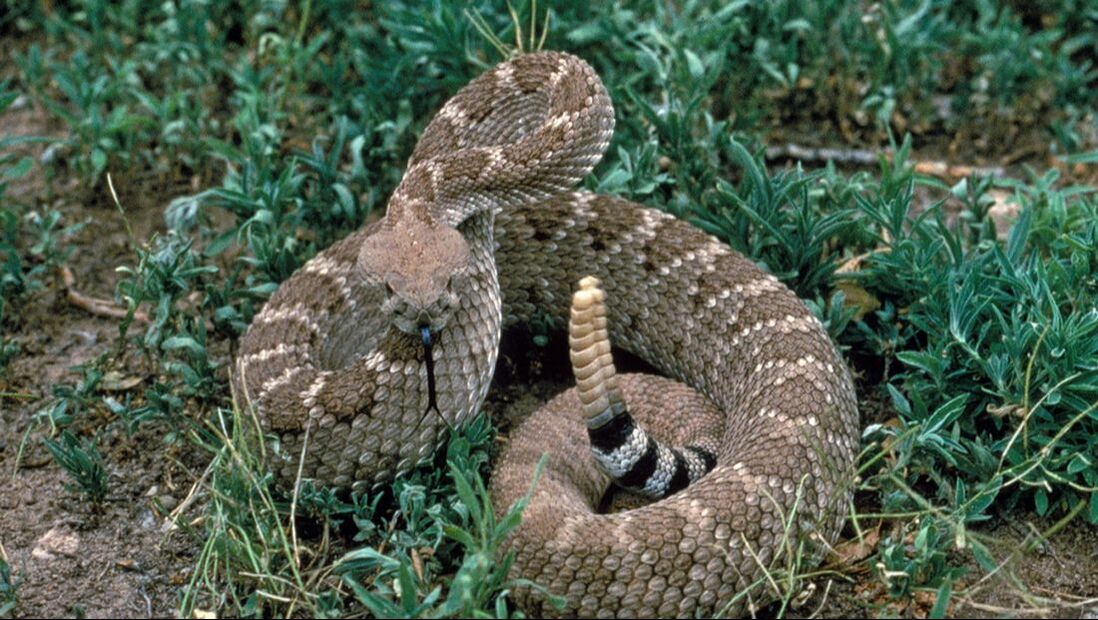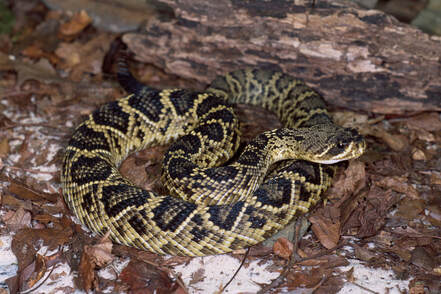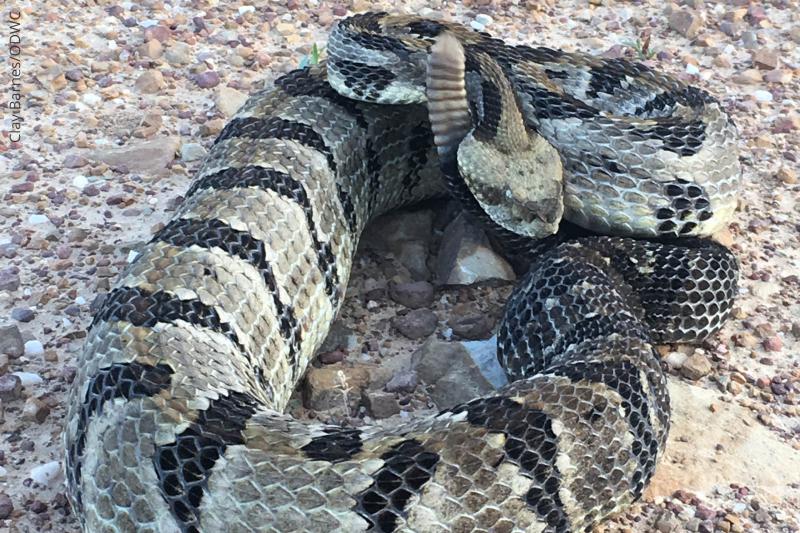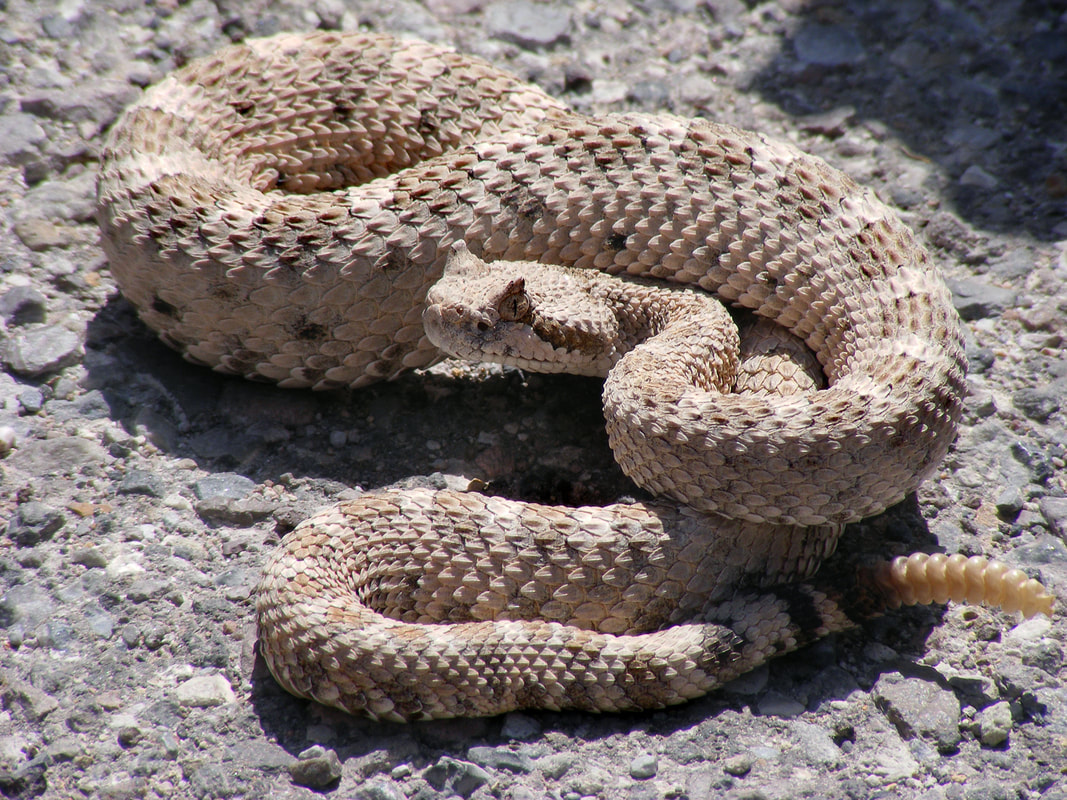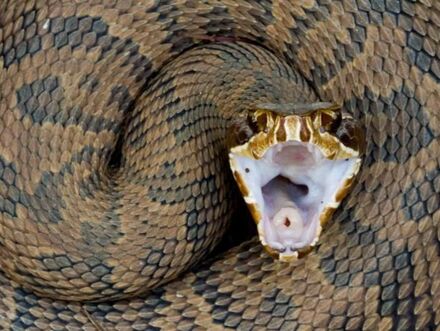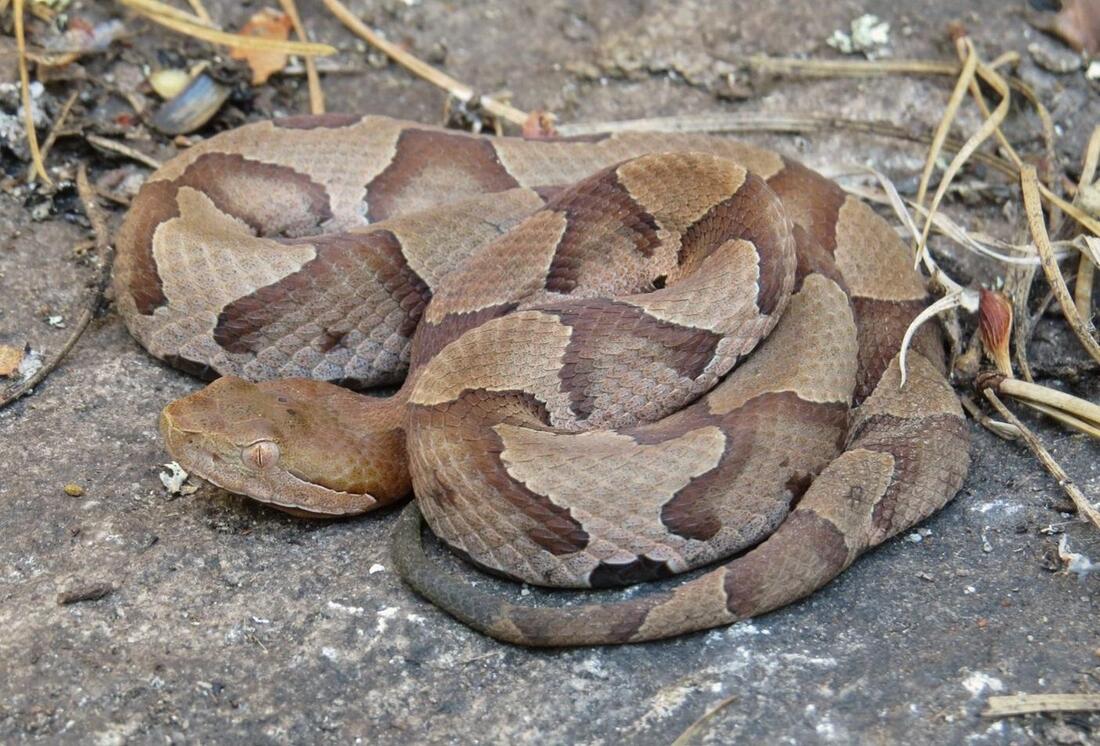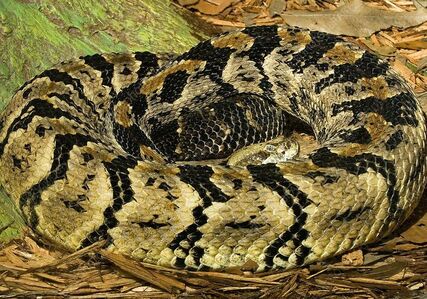Knowing and understanding the behavior of animals that can pose a threat to you is paramount in protecting yourself and your loved ones when you venture out into the woods. Knowing and familiarizing yourself with what animals exist in your neck of the woods is important for knowing what kind of predators you could be dealing with. There are numerous resources that you can use to familiarize yourself with the wildlife in your area. Your local national parks and park rangers can give you a wealth of information and resources. The Department of Wildlife has regional offices that have a complete list of all wildlife that exist in each region. The information below will help you understand some of the behavior and characteristics of animals that exist in the United States and who can pose a threat.
Black Bear -Ursus americanus
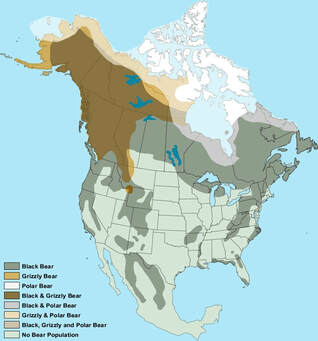
Biology:
Adult black bears are 50 to 70 inches in length which includes the stubby tail that typically is 3 to 5 inches in length. They stand about 30 inches tall at the shoulder and weigh 110-400 pounds, with some having been recorded being 650 pounds! Here in Virginia, these black beauties average about 220 pounds for the males while the females come in at about 120 pounds. Their fur is long, thick and soft. Their color is typically black to brownish-black but there are some with a cinnamon-brown color. Their muzzle has a tan color which ascends from the nose area and stops towards the curvature of the eyebrows. In some cases, some may also have a V-shape, white mark on their chest. For the most part, the appearance of both males and females are identical to each other with relationship to their fur color. Whereas, size on the other hand will be easy to distinguish as the males are larger then the females.
Basic Characteristics:
Bears are extremely fast and agile as they can run at speeds of 30 miles per hour and swim very well. When walking, their gait is a shuffling, flat-footed gait. When swimming, they paddle like a dog with their head facing up and out of the water. Although bears have good eyesight, their senses of smell and hearing are far sharper and use these senses to be very alert and cautious when roaming about. When they are unable to see something, they will stand on their feet in order to have better visibility of their surroundings. Typically, bears are silent but when under duress or provoked, they will growl and make deep breathing noises with deep, undertone guttural sounds when provoked. A mother will grunt, or huff when calling her cubs to her. When hurt they will bellow, bawl or make sobbing sounds. Bears are mainly nocturnal animals even though they may be found feeding and or moving about during the day. Bears travel alone unless it is a female with her cubs. In this case, she will remain moving about with them for the next two years of their life. If a female bear is with her cubs and feels threatened, the female will indeed attack to defend her cubs at all cost. Bears tend to stay clear of open areas when they are traveling, however, in parks or places where people are prone to leaving food or trash around, bears will become more familiar with frequenting the place. Most places in which black bears are not in contact with humans tend to act more aggressive with humans and will attack them. Cubs are playful and can be found wrestling with each other or playing around in the water. If the mother feels a sense of danger the cubs will go climbing up the trees for protection. It is a known fact that sometimes adult male bears kill and eat the cubs of a litter. Why they will do that is unknown and an unanswered questioned as of yet.
Signs and Tracking:
Bears are territorial and will use their claws and teeth to scar trees in order to mark their individual territory. Other signs of bear activity are paw prints ranging from 3.5 to 7 inches in length. Overturned logs are signs of their foraging for insects, frogs and other creatures for a food source. It is also common to find large droppings of dung, either in discrete or loose piles and with signs of seeds, insect parts, animal hair or nutshells are commonly found in their excrement..
Habitat:
Black Bears are commonly found during the spring and summer months and are the largest carnivores in the East. They can also be found as far up as Canada and as low as Mexico as well as in portions of the east and west coasts. Although they hibernate during the winter seasons, you will find them active in the summer seasons lingering about in streams to keep cool and to fish.
Eating Habits:
Bears use their sense of smell as their main source of seeking out food. Most of their diet consists of fruits and vegetation during the spring and summer months such as pawpaws, skunk cabbage, blackberries, devil-walking stick, persimmons, wild grapes as well as the leaves of hardwoods such as plant roots, grass and apples. They will eat insects at any stage of its development, bee larvae, honey, amphibians, reptiles, small mammals, fish and of course garbage. In fall season, they feast on acorns where they can be found in abundance. They drink lots of water and can be found doing so often throughout the day. When bears are acting beyond their normal state, they will also attack sheep, pigs, goats and even humans.
Life Cycle:
During the summer season, males seek out potential females to mate with. When a male copulates with a female, the act itself causes the female to ovulate although the fertile egg remains dormant until later in the fall. During this time the female will begin to gain the necessary weight needed for hibernation. It takes ten weeks for the egg to develop inside the female womb. During the winter hibernation, the female will give birth in a place of rest. Females typically select a more secluded shelter site as opposed to males. Only female bears and her cubs den together whereas females that are pregnant and males will den by themselves. During hibernation the bear's body temperature goes from 100 degrees Fahrenheit to 94 degrees Fahrenheit while their heart beat drops from 40 beats per minute to eight beats per minute. They also neither poop nor urinate during hibernation as they live off of their fat stores. By the end of winter and their hibernation, they will have lost literally a quarter to a third of their body weight. If they become aroused out of slumber, they will wake up immediately and will be put under duress if disturbed while hibernating. Bears that are underweight or in poor condition will have a shorter period of hibernation as opposed to bears who are hibernating in a healthy condition. It is common for female bears to give birth to one to four cubs. When born, the cubs are blind and pink with with black hair follicles covering them. They tend to be 6 to 9 inches long and weigh 6 to 12 ounces. During this time cubs have the ability to naturally crawl toward the mothers nipples to nurse. After about four weeks the eyes of the cubs will begin to open and a about sixty days after that, they will begin to walk. Once the cubs are about three months old they will begin to leave the den with their mother. The males literally have no part in the rearing of the cubs at all, and is the mother bear who solely takes the responsibility for raising them and teaching them to fend for themselves. The mother weans them by the seventh month and while teaching them how to hunt and catch prey. By fall, the cubs should be about 60 to 100 pounds in weight. The mother bear spends two years with her litter as black bears are not the kind which travel in groups, so if seen, it is the mother and her cubs if found together. During the next winter she will do all she can to get her cubs to be fattened up as she will hibernate with her cubs and remain with them till next summer. By the time the second summer has arrived the whole family separates and the cycle begins anew.
Adult black bears are 50 to 70 inches in length which includes the stubby tail that typically is 3 to 5 inches in length. They stand about 30 inches tall at the shoulder and weigh 110-400 pounds, with some having been recorded being 650 pounds! Here in Virginia, these black beauties average about 220 pounds for the males while the females come in at about 120 pounds. Their fur is long, thick and soft. Their color is typically black to brownish-black but there are some with a cinnamon-brown color. Their muzzle has a tan color which ascends from the nose area and stops towards the curvature of the eyebrows. In some cases, some may also have a V-shape, white mark on their chest. For the most part, the appearance of both males and females are identical to each other with relationship to their fur color. Whereas, size on the other hand will be easy to distinguish as the males are larger then the females.
Basic Characteristics:
Bears are extremely fast and agile as they can run at speeds of 30 miles per hour and swim very well. When walking, their gait is a shuffling, flat-footed gait. When swimming, they paddle like a dog with their head facing up and out of the water. Although bears have good eyesight, their senses of smell and hearing are far sharper and use these senses to be very alert and cautious when roaming about. When they are unable to see something, they will stand on their feet in order to have better visibility of their surroundings. Typically, bears are silent but when under duress or provoked, they will growl and make deep breathing noises with deep, undertone guttural sounds when provoked. A mother will grunt, or huff when calling her cubs to her. When hurt they will bellow, bawl or make sobbing sounds. Bears are mainly nocturnal animals even though they may be found feeding and or moving about during the day. Bears travel alone unless it is a female with her cubs. In this case, she will remain moving about with them for the next two years of their life. If a female bear is with her cubs and feels threatened, the female will indeed attack to defend her cubs at all cost. Bears tend to stay clear of open areas when they are traveling, however, in parks or places where people are prone to leaving food or trash around, bears will become more familiar with frequenting the place. Most places in which black bears are not in contact with humans tend to act more aggressive with humans and will attack them. Cubs are playful and can be found wrestling with each other or playing around in the water. If the mother feels a sense of danger the cubs will go climbing up the trees for protection. It is a known fact that sometimes adult male bears kill and eat the cubs of a litter. Why they will do that is unknown and an unanswered questioned as of yet.
Signs and Tracking:
Bears are territorial and will use their claws and teeth to scar trees in order to mark their individual territory. Other signs of bear activity are paw prints ranging from 3.5 to 7 inches in length. Overturned logs are signs of their foraging for insects, frogs and other creatures for a food source. It is also common to find large droppings of dung, either in discrete or loose piles and with signs of seeds, insect parts, animal hair or nutshells are commonly found in their excrement..
Habitat:
Black Bears are commonly found during the spring and summer months and are the largest carnivores in the East. They can also be found as far up as Canada and as low as Mexico as well as in portions of the east and west coasts. Although they hibernate during the winter seasons, you will find them active in the summer seasons lingering about in streams to keep cool and to fish.
Eating Habits:
Bears use their sense of smell as their main source of seeking out food. Most of their diet consists of fruits and vegetation during the spring and summer months such as pawpaws, skunk cabbage, blackberries, devil-walking stick, persimmons, wild grapes as well as the leaves of hardwoods such as plant roots, grass and apples. They will eat insects at any stage of its development, bee larvae, honey, amphibians, reptiles, small mammals, fish and of course garbage. In fall season, they feast on acorns where they can be found in abundance. They drink lots of water and can be found doing so often throughout the day. When bears are acting beyond their normal state, they will also attack sheep, pigs, goats and even humans.
Life Cycle:
During the summer season, males seek out potential females to mate with. When a male copulates with a female, the act itself causes the female to ovulate although the fertile egg remains dormant until later in the fall. During this time the female will begin to gain the necessary weight needed for hibernation. It takes ten weeks for the egg to develop inside the female womb. During the winter hibernation, the female will give birth in a place of rest. Females typically select a more secluded shelter site as opposed to males. Only female bears and her cubs den together whereas females that are pregnant and males will den by themselves. During hibernation the bear's body temperature goes from 100 degrees Fahrenheit to 94 degrees Fahrenheit while their heart beat drops from 40 beats per minute to eight beats per minute. They also neither poop nor urinate during hibernation as they live off of their fat stores. By the end of winter and their hibernation, they will have lost literally a quarter to a third of their body weight. If they become aroused out of slumber, they will wake up immediately and will be put under duress if disturbed while hibernating. Bears that are underweight or in poor condition will have a shorter period of hibernation as opposed to bears who are hibernating in a healthy condition. It is common for female bears to give birth to one to four cubs. When born, the cubs are blind and pink with with black hair follicles covering them. They tend to be 6 to 9 inches long and weigh 6 to 12 ounces. During this time cubs have the ability to naturally crawl toward the mothers nipples to nurse. After about four weeks the eyes of the cubs will begin to open and a about sixty days after that, they will begin to walk. Once the cubs are about three months old they will begin to leave the den with their mother. The males literally have no part in the rearing of the cubs at all, and is the mother bear who solely takes the responsibility for raising them and teaching them to fend for themselves. The mother weans them by the seventh month and while teaching them how to hunt and catch prey. By fall, the cubs should be about 60 to 100 pounds in weight. The mother bear spends two years with her litter as black bears are not the kind which travel in groups, so if seen, it is the mother and her cubs if found together. During the next winter she will do all she can to get her cubs to be fattened up as she will hibernate with her cubs and remain with them till next summer. By the time the second summer has arrived the whole family separates and the cycle begins anew.
Cougar, puma, Mountain Lion -Puma concolor
Biology:
With more than 40 names in the English lanuage alone, the cougar is also commonly referred to as a mountain lion, panther and puma. In truth though, they are all the same animal: Puma Concolor. Cougars are the second largest cat in the United States. Adult male cougars can weigh from 120 to 220 pounds while the females will weigh 64 to 140 pounds. From their head to their back side they range from 3 1/4 feet to 5 1/4 feet in length with their tale not included and females stand at about two to three feet in height . Their tail can be between 23 1/2 inches to 33 1/5 inches in length. Their fur is short and sandy brown with white on the inner legs, belly, lower jaw and middle upper lip area. Adult cougars have brown or golden eye color.
Basic Characteristics:
Cougars are loners who will travel long distances in search of food. Although they are active during the day, they primarily do most of their hunting and activity at night. They are extremely agile creatures as they can leap up to 20 feet including up into a tree, climb over a 12-foot fence, run distances of 40 feet, reach speeds of 50 mph in a sprint and travel at 10 mph for long distances. Unlike most big cats, cougars do not roar although they do hiss, growl, purr, whistle and scream which can especially be heard during their mating periods. Generally speaking though, they are quiet animals.
Signs and Tracking:
Cougar paw prints are typically 3 1/2 inches wide with four toes visible. Two toes are higher in the middle with the outer two somewhat lower in a diagonal form with the rear paw pad making a kinda smudged "M" shape. Their paws curve in a similar fashion as human feet do where you can identify both the right and left paw prints. Cougar scat tends to be segmented and be about an inch in length. It will have signs of hair and bones, which will cause excrement to have a whitish look. They tend to leave their scat near places they have killed prey at, along dirt roads or trails, and as a territory marker, which tends to be more common among male cougars as opposed to females. They will also use their hind legs to scrape the ground leaving behind dirt mounds with urine and scat. This is typically done to mark their dominance which oftentimes is near or overlaps another cougar's territory, draw females to mate with or ward off any males who might try to harm him or his mate. Scratch marks are also commonly used to mark their presence since other cougars will smell around the marks left behind.
Habitat:
Cougars are very environmentally adaptable and are found in deserts, swamps, mountains and prairies. They like to choose places that are conducive to ambushing prey or giving them cover in order to pursue their hunt. Cougars were once found all over the United States but now are only in Western North America, a small region of Florida and most of South America. They were largely wiped out from the Eastern United States and Canada during the 1700s by European colonists. The Florida panther is also considered critically endangered.
Eating Habits:
Cougars will hunt by themselves during the evening hours and during dusk or dawn. Their choice of attack is done through attacking their prey from behind as they are highly skilled at stalking and stealth to catch their prey by surprise. Once they attack from the rear they go in for the neck for the final blow. Cougars tend to favor deer and smaller animals such as coyotes, raccoons, rodents, elk, and even porcupines. A cougar will eat, on average, a deer per week. When they want to save their catch for eating later, they will drag the carcass of the animal they killed to another place where they would cover it with grass, pine needles, and dead leaves to protect it from spoilage and other would-be predators. Such a kill would then be used for feeding upon for several days.
Life Cycle:
During most of a male cougar's life, the male is a solitary animal with exception to the time period of their mating seasons which takes place during late winter or early spring. During this time period the male will pair up with a female, but only briefly in order to mate. Once the mating is finished the male cougar will leave and the female cougar will rear up the baby cubs herself. A female cougar's gestation is approximately 92 days and only takes a female cougar a year and a half to reach sexual maturity. Although they go in heat regularly throughout the year, they will usually only produce once every two to three years. During the time of her pregnancy she will seek out a den among rocks or a dense thicket to give birth to her cubs. A female can give birth to one or four kittens but average around three. Once they are born the cubs will have black spots on their sandy brown fur and will have blue eyes until three months of age. The kittens are protected by their mother as the male may kill any they find. During the first three months of their life the kittens are fed solely by their mother's milk. After three months, she weans them, and spends the next year and nine months teaching the young cubs how to hunt as they depend entirely on the mother's skills for their food.
With more than 40 names in the English lanuage alone, the cougar is also commonly referred to as a mountain lion, panther and puma. In truth though, they are all the same animal: Puma Concolor. Cougars are the second largest cat in the United States. Adult male cougars can weigh from 120 to 220 pounds while the females will weigh 64 to 140 pounds. From their head to their back side they range from 3 1/4 feet to 5 1/4 feet in length with their tale not included and females stand at about two to three feet in height . Their tail can be between 23 1/2 inches to 33 1/5 inches in length. Their fur is short and sandy brown with white on the inner legs, belly, lower jaw and middle upper lip area. Adult cougars have brown or golden eye color.
Basic Characteristics:
Cougars are loners who will travel long distances in search of food. Although they are active during the day, they primarily do most of their hunting and activity at night. They are extremely agile creatures as they can leap up to 20 feet including up into a tree, climb over a 12-foot fence, run distances of 40 feet, reach speeds of 50 mph in a sprint and travel at 10 mph for long distances. Unlike most big cats, cougars do not roar although they do hiss, growl, purr, whistle and scream which can especially be heard during their mating periods. Generally speaking though, they are quiet animals.
Signs and Tracking:
Cougar paw prints are typically 3 1/2 inches wide with four toes visible. Two toes are higher in the middle with the outer two somewhat lower in a diagonal form with the rear paw pad making a kinda smudged "M" shape. Their paws curve in a similar fashion as human feet do where you can identify both the right and left paw prints. Cougar scat tends to be segmented and be about an inch in length. It will have signs of hair and bones, which will cause excrement to have a whitish look. They tend to leave their scat near places they have killed prey at, along dirt roads or trails, and as a territory marker, which tends to be more common among male cougars as opposed to females. They will also use their hind legs to scrape the ground leaving behind dirt mounds with urine and scat. This is typically done to mark their dominance which oftentimes is near or overlaps another cougar's territory, draw females to mate with or ward off any males who might try to harm him or his mate. Scratch marks are also commonly used to mark their presence since other cougars will smell around the marks left behind.
Habitat:
Cougars are very environmentally adaptable and are found in deserts, swamps, mountains and prairies. They like to choose places that are conducive to ambushing prey or giving them cover in order to pursue their hunt. Cougars were once found all over the United States but now are only in Western North America, a small region of Florida and most of South America. They were largely wiped out from the Eastern United States and Canada during the 1700s by European colonists. The Florida panther is also considered critically endangered.
Eating Habits:
Cougars will hunt by themselves during the evening hours and during dusk or dawn. Their choice of attack is done through attacking their prey from behind as they are highly skilled at stalking and stealth to catch their prey by surprise. Once they attack from the rear they go in for the neck for the final blow. Cougars tend to favor deer and smaller animals such as coyotes, raccoons, rodents, elk, and even porcupines. A cougar will eat, on average, a deer per week. When they want to save their catch for eating later, they will drag the carcass of the animal they killed to another place where they would cover it with grass, pine needles, and dead leaves to protect it from spoilage and other would-be predators. Such a kill would then be used for feeding upon for several days.
Life Cycle:
During most of a male cougar's life, the male is a solitary animal with exception to the time period of their mating seasons which takes place during late winter or early spring. During this time period the male will pair up with a female, but only briefly in order to mate. Once the mating is finished the male cougar will leave and the female cougar will rear up the baby cubs herself. A female cougar's gestation is approximately 92 days and only takes a female cougar a year and a half to reach sexual maturity. Although they go in heat regularly throughout the year, they will usually only produce once every two to three years. During the time of her pregnancy she will seek out a den among rocks or a dense thicket to give birth to her cubs. A female can give birth to one or four kittens but average around three. Once they are born the cubs will have black spots on their sandy brown fur and will have blue eyes until three months of age. The kittens are protected by their mother as the male may kill any they find. During the first three months of their life the kittens are fed solely by their mother's milk. After three months, she weans them, and spends the next year and nine months teaching the young cubs how to hunt as they depend entirely on the mother's skills for their food.
Bobcat -Lynx rufus
Biology:
The Bobcat is the smaller of the Lynx genus and is sometimes confused with its three other cousins, specifically the Canada Lynx here in North America. Adult Bobcats are 28 to 47 inches in length which also includes the stubby tail that is typically 6 inches in length. They stand about 30 inches tall at the shoulder and weigh 18 to 24 pounds, with some recorded up to 35 pounds, yet such is rare however. Males are larger in proportion to females. Their fur is long, thick and typically brownish mingled with some white hair and black spots. Their ears are pointed with long, black tufts of hair extending from the tips. Their muzzle is tan and white with dark stripes in the head. They have white on their bellies, legs and neck. They have three to four dark bands on the tail and their bodies are rangy and muscular. Their rear legs are longer then their front ones. They have needle-sharp claws which are retractable and used for gripping and or attacking their prey.
Basic Characteristics:
Bobcats have excellent vision, hearing and sense of smell. They are very agile when it comes to climbing, pursing prey or making a quick get-a-way if need be. They like to use the branches of trees to rest on or search for possible prey. They are quick, aggressive and very strong. However, they do not like water by any means and will go out of their way to avoid it as much as possible. They will avoid entering or crossing bodies of water at all cost unless absolutely necessary. They are most commonly active during the early evening. They will be active from about three hours before sunset until midnight and before dawn until three hours after sunrise.
Signs and Tracking:
Bobcats leave feces, urine, and scent that is produced in its anal glands. It will also leave claw marks on trees in order to mark their territory. Their scat will be segmented and can be smooth, hairy, dark, brownish black in color or even whitish looking as well as leave rear-paw scratches.
Habitat:
Bobcats live mainly in the forest and mountain regions but can also be found near farm lands, swamps, bottom lands or wooded hills. These places are perfect for these cats to make dens and provide a wide variety of prey for food. They use many types of shelters, brush piles, thickets, rock ledges and even hollow logs to make their home in. It isn't uncommon for them to live close to developed areas as long as there is wooded and bushy areas to provide them cover for breeding, hunting and resting.
Eating Habits:
They hunt by means of stalking and move around in covered areas to make it easy for them to stalk their prey. They will creep up to within 20 to 35 feet from their prey while crouching and standing still before going in for the kill. They will rush or pounce upon their prey, going for the throat, neck or base of the skull to bite down on for a lethal blow. A bobcat will eat till it is full then cover the carcass with leaves, or snow in winter, then return to feed on several times if needed. Bobcats mainly feed on mice, rabbits, squirrels, birds, voles, chipmunks, shrews, and snowshoe hares. However, it isn't uncommon for them to eat fish, minks, skunks, porcupines, foxes, insects and frogs. They do go after deer but typically go after the fawns instead of the adults as adult deer are more able to defend themselves and get away. When they do go after adult deer, they will attack them while they are sleeping for the fullest advantage. In the winter time, when most small prey are not as abundant anymore, they will spend more of their time hunting deer then any other time of the year and hunt and kill more deer then any other animal in the winter months. Bobcats will habitually travel two to seven miles per night along the same routes to hunt. In the summer, male bobcats have about a 16 square mile range while the range of female bobcats are about half of that. In the winter, males will tend to overlap into other male territories as they will expand their range in search of food while females won't commonly trespass into another female's territory.
Life Cycle:
The mating season is primarily in the winter, though mating can take place anytime from November until August. Gestation is 60 to 70 days there are usually two to four kittens per litter. The den can be a hollow tree, a cave, in dense shrubs, rocky areas or any other place protected from the weather. The female lines the den with moss and foliage and the kittens are typically born in the spring. Once the kittens are born, the female drives the male away, although the male will stay in the vicinity. The kittens are born blind, with a full coat of hair with spots. After about eight or nine days their eyes open, and are weaned after about two months and will then travel with her for three to five months, separating from her before the winter mating season. Females are sexually mature and mate after one year but males do not mate until they are about 2 years old. In some cases, bobcats have been known to live as long as fifteen years in the wild but they typically average about six to eight years. Unfortunately, many die from starvation and disease before they really master their hunting skills and don't live past their first or second winter.
The Bobcat is the smaller of the Lynx genus and is sometimes confused with its three other cousins, specifically the Canada Lynx here in North America. Adult Bobcats are 28 to 47 inches in length which also includes the stubby tail that is typically 6 inches in length. They stand about 30 inches tall at the shoulder and weigh 18 to 24 pounds, with some recorded up to 35 pounds, yet such is rare however. Males are larger in proportion to females. Their fur is long, thick and typically brownish mingled with some white hair and black spots. Their ears are pointed with long, black tufts of hair extending from the tips. Their muzzle is tan and white with dark stripes in the head. They have white on their bellies, legs and neck. They have three to four dark bands on the tail and their bodies are rangy and muscular. Their rear legs are longer then their front ones. They have needle-sharp claws which are retractable and used for gripping and or attacking their prey.
Basic Characteristics:
Bobcats have excellent vision, hearing and sense of smell. They are very agile when it comes to climbing, pursing prey or making a quick get-a-way if need be. They like to use the branches of trees to rest on or search for possible prey. They are quick, aggressive and very strong. However, they do not like water by any means and will go out of their way to avoid it as much as possible. They will avoid entering or crossing bodies of water at all cost unless absolutely necessary. They are most commonly active during the early evening. They will be active from about three hours before sunset until midnight and before dawn until three hours after sunrise.
Signs and Tracking:
Bobcats leave feces, urine, and scent that is produced in its anal glands. It will also leave claw marks on trees in order to mark their territory. Their scat will be segmented and can be smooth, hairy, dark, brownish black in color or even whitish looking as well as leave rear-paw scratches.
Habitat:
Bobcats live mainly in the forest and mountain regions but can also be found near farm lands, swamps, bottom lands or wooded hills. These places are perfect for these cats to make dens and provide a wide variety of prey for food. They use many types of shelters, brush piles, thickets, rock ledges and even hollow logs to make their home in. It isn't uncommon for them to live close to developed areas as long as there is wooded and bushy areas to provide them cover for breeding, hunting and resting.
Eating Habits:
They hunt by means of stalking and move around in covered areas to make it easy for them to stalk their prey. They will creep up to within 20 to 35 feet from their prey while crouching and standing still before going in for the kill. They will rush or pounce upon their prey, going for the throat, neck or base of the skull to bite down on for a lethal blow. A bobcat will eat till it is full then cover the carcass with leaves, or snow in winter, then return to feed on several times if needed. Bobcats mainly feed on mice, rabbits, squirrels, birds, voles, chipmunks, shrews, and snowshoe hares. However, it isn't uncommon for them to eat fish, minks, skunks, porcupines, foxes, insects and frogs. They do go after deer but typically go after the fawns instead of the adults as adult deer are more able to defend themselves and get away. When they do go after adult deer, they will attack them while they are sleeping for the fullest advantage. In the winter time, when most small prey are not as abundant anymore, they will spend more of their time hunting deer then any other time of the year and hunt and kill more deer then any other animal in the winter months. Bobcats will habitually travel two to seven miles per night along the same routes to hunt. In the summer, male bobcats have about a 16 square mile range while the range of female bobcats are about half of that. In the winter, males will tend to overlap into other male territories as they will expand their range in search of food while females won't commonly trespass into another female's territory.
Life Cycle:
The mating season is primarily in the winter, though mating can take place anytime from November until August. Gestation is 60 to 70 days there are usually two to four kittens per litter. The den can be a hollow tree, a cave, in dense shrubs, rocky areas or any other place protected from the weather. The female lines the den with moss and foliage and the kittens are typically born in the spring. Once the kittens are born, the female drives the male away, although the male will stay in the vicinity. The kittens are born blind, with a full coat of hair with spots. After about eight or nine days their eyes open, and are weaned after about two months and will then travel with her for three to five months, separating from her before the winter mating season. Females are sexually mature and mate after one year but males do not mate until they are about 2 years old. In some cases, bobcats have been known to live as long as fifteen years in the wild but they typically average about six to eight years. Unfortunately, many die from starvation and disease before they really master their hunting skills and don't live past their first or second winter.
coyote -Canis latrans
Biology:
The coyote, also known as the prairie wolf and brush wolf, is a canine that is native to North America. Recent DNA studies have shown that coyotes once interbred with the grey wolf, specifically during the Eastern expansion of Canada and the clearing of the Eastern forests. As a result, coyotes were being born much larger than their counterpart coyotes. Their sizes range from 41 to 48 inches long and include their tail. Their weight can range from 20 to 50 pounds, with the males being larger and more weightier than the females. Coyotes have a similar look and body structure to that of German Shepherds. They have pointy, reddish brown ears with a sandy, blonde color on the inner ear and snout. They have reddish brown hair in the middle extending toward the eyes with a mixture of black, blonde and reddish fur on the face. The main coat has course, dense, long fur along the body with a black or reddish with a hint of blonde. The interior part of the leg is sandy blonde while the outer part is reddish brown. The tail is bushy with a black tip that extends to the main posterior area with sandy blonde, black and reddish brown intermingled with blackish spots. Some may have no reddish brown and more sandy brown with black mingled coats and really depends where these coyotes are located.
Basic Characteristics:
Coyotes tend to live alone but will form packs in the fall and winter to hunt more effectively. Coyotes also form strong family groups where the female will den in the spring and give birth to anywhere from 3-12 pups. In places where coyotes are hunted down in large numbers, they will produce larger litters. As a pack, they will consist of the adult male, his female mate and their offspring. They spend their days resting in bushy areas or around shrubs in dense mountainous or hilly terrain. They are active during twilight, and in the evening time but especially during the times of dawn and dusk in areas where there is human activity. In places where human activity is low, they may be found active during the day as well. Coyotes have a keen sense of smell, eyesight and hearing and are extremely alert and cautious. They can run up to speeds of 40 miles per hour. Their territories are between 1 and 10 square miles which they will dutifully defend as a pack but not commonly alone or with a mate. They like to mark their territory by means of leaving feces in particular locations and urinating on bushes and other wilderness objects. This strong scent will warn other coyotes from trespassing into their territory.
Signs and Tracking:
One of the main tracking signs to look for is their paw tracks. For example, domestic dogs have an alternate gate whereas a coyote's paw prints are straight. You can literally draw a straight line from the first paw print to that of the other three in a parallel line formation. Their dung will also shows signs of plant matter, insects, parts of birds, animal hair and small mammal remains that will let you know of their presence in the area.
Habitat:
Although Coyotes used to only be found in the grasslands and prairies, they are also found in marshlands, forests and mountains. During the months of April and may, female coyotes will seek out a place to give birth such as a den, brushy slopes, a hollow log, a hole under a stump, fallen tree, or even a crevice among rocks. The size of dens tend to be about a foot wide and about 20 ft long.
Eating Habits:
Coyote's hunting and eating habits are very opportunistic and they will eat just about anything. Coyotes will eat. fish, frogs, rabbits, crayfish, insects, birds, small rodents, snakes, cats, dogs, foxes, raccoons, opossums, deer, muskrats, hares, snowshoe hares and livestock such as chickens, sheep, goats and so forth. Coyotes like to creep up quietly to their prey, pause and then spring in a surprise attack to catch their prey. If they seek to kill larger animals such as a deer, they will team up together and take turns chasing their prey to wear it out and then finally kill it by a lethal bite to the throat. They tend to hunt fawns rather than adult deer. After eating their fill, they will store their food for later by burying the carcass and then marking the area with their urine in order to find it again. Although coyotes will eat wild fruits and berries in season, 90% of their diet is meat. They will eat fresh meat from a kill and also scavenge dead animals.
Life Cycle:
Female coyotes go into heat once per year and it occurs during the late winter period. A female's gestation period is 58-63 days. In the months of April or May when the female seeks out a birthing den. A female will give birth between 3 to 12 pups but average around 6 pups a litter. At birth, a coyote pup usually weighs about 9 ounces and are born with their eyes closed and covered with woolly gray-brown fur. During this time the male coyote will bring its mate food. After two weeks the eyes of the pups will open. And after three week the coyote pups will then begin to roam about inside and outside of their den. Both the female and her mate will hunt, eat and regurgitate their food for feeding their pups for the next six weeks. After about nine weeks, the young pups are weaned and the family leaves the den to teach the young pups how to hunt.
At around six months old, the young coyotes will begin to leave their family unit around early fall. The young females tend to venture up to 30 to 50 miles out, while the males tend to go as far as 100 miles in distance. At around 9 months, both the male and female pups will now be fully grown and the females will typically not breed until their second winter. The ones that don't leave the family pack will stay up to a year and a half. Some coyote pairs will remain together for one year to several years while others will remain together for a life time.
The coyote, also known as the prairie wolf and brush wolf, is a canine that is native to North America. Recent DNA studies have shown that coyotes once interbred with the grey wolf, specifically during the Eastern expansion of Canada and the clearing of the Eastern forests. As a result, coyotes were being born much larger than their counterpart coyotes. Their sizes range from 41 to 48 inches long and include their tail. Their weight can range from 20 to 50 pounds, with the males being larger and more weightier than the females. Coyotes have a similar look and body structure to that of German Shepherds. They have pointy, reddish brown ears with a sandy, blonde color on the inner ear and snout. They have reddish brown hair in the middle extending toward the eyes with a mixture of black, blonde and reddish fur on the face. The main coat has course, dense, long fur along the body with a black or reddish with a hint of blonde. The interior part of the leg is sandy blonde while the outer part is reddish brown. The tail is bushy with a black tip that extends to the main posterior area with sandy blonde, black and reddish brown intermingled with blackish spots. Some may have no reddish brown and more sandy brown with black mingled coats and really depends where these coyotes are located.
Basic Characteristics:
Coyotes tend to live alone but will form packs in the fall and winter to hunt more effectively. Coyotes also form strong family groups where the female will den in the spring and give birth to anywhere from 3-12 pups. In places where coyotes are hunted down in large numbers, they will produce larger litters. As a pack, they will consist of the adult male, his female mate and their offspring. They spend their days resting in bushy areas or around shrubs in dense mountainous or hilly terrain. They are active during twilight, and in the evening time but especially during the times of dawn and dusk in areas where there is human activity. In places where human activity is low, they may be found active during the day as well. Coyotes have a keen sense of smell, eyesight and hearing and are extremely alert and cautious. They can run up to speeds of 40 miles per hour. Their territories are between 1 and 10 square miles which they will dutifully defend as a pack but not commonly alone or with a mate. They like to mark their territory by means of leaving feces in particular locations and urinating on bushes and other wilderness objects. This strong scent will warn other coyotes from trespassing into their territory.
Signs and Tracking:
One of the main tracking signs to look for is their paw tracks. For example, domestic dogs have an alternate gate whereas a coyote's paw prints are straight. You can literally draw a straight line from the first paw print to that of the other three in a parallel line formation. Their dung will also shows signs of plant matter, insects, parts of birds, animal hair and small mammal remains that will let you know of their presence in the area.
Habitat:
Although Coyotes used to only be found in the grasslands and prairies, they are also found in marshlands, forests and mountains. During the months of April and may, female coyotes will seek out a place to give birth such as a den, brushy slopes, a hollow log, a hole under a stump, fallen tree, or even a crevice among rocks. The size of dens tend to be about a foot wide and about 20 ft long.
Eating Habits:
Coyote's hunting and eating habits are very opportunistic and they will eat just about anything. Coyotes will eat. fish, frogs, rabbits, crayfish, insects, birds, small rodents, snakes, cats, dogs, foxes, raccoons, opossums, deer, muskrats, hares, snowshoe hares and livestock such as chickens, sheep, goats and so forth. Coyotes like to creep up quietly to their prey, pause and then spring in a surprise attack to catch their prey. If they seek to kill larger animals such as a deer, they will team up together and take turns chasing their prey to wear it out and then finally kill it by a lethal bite to the throat. They tend to hunt fawns rather than adult deer. After eating their fill, they will store their food for later by burying the carcass and then marking the area with their urine in order to find it again. Although coyotes will eat wild fruits and berries in season, 90% of their diet is meat. They will eat fresh meat from a kill and also scavenge dead animals.
Life Cycle:
Female coyotes go into heat once per year and it occurs during the late winter period. A female's gestation period is 58-63 days. In the months of April or May when the female seeks out a birthing den. A female will give birth between 3 to 12 pups but average around 6 pups a litter. At birth, a coyote pup usually weighs about 9 ounces and are born with their eyes closed and covered with woolly gray-brown fur. During this time the male coyote will bring its mate food. After two weeks the eyes of the pups will open. And after three week the coyote pups will then begin to roam about inside and outside of their den. Both the female and her mate will hunt, eat and regurgitate their food for feeding their pups for the next six weeks. After about nine weeks, the young pups are weaned and the family leaves the den to teach the young pups how to hunt.
At around six months old, the young coyotes will begin to leave their family unit around early fall. The young females tend to venture up to 30 to 50 miles out, while the males tend to go as far as 100 miles in distance. At around 9 months, both the male and female pups will now be fully grown and the females will typically not breed until their second winter. The ones that don't leave the family pack will stay up to a year and a half. Some coyote pairs will remain together for one year to several years while others will remain together for a life time.
American Alligator -Alligator mississippiensis
Biology:
The American alligator is the largest reptile in North America. The name alligator comes from the Spanish word, el lagarto, which means lizard. It has a long armored body with thick scales or bony plates called osteoderms or scutes. It has short, powerful legs and a long, round snout. (The American crocodile has a long, pointed snout.) It's eyes are on the top of its head. When the alligator is in the water, it can swim with just the top of its head above the water. This can help it sneak up on its prey. When the American alligator slips under the water, its nostrils and ears close up and a membrane covers its eyes. Its long tail helps it move through the water. The alligator has up to 80 teeth in its mouth at a time. When its teeth wear down, new ones will grow. An alligator will go through 2,000 to 3,000 teeth in their lifetime! Females can grow to lengths of about nine feet while males grow to lengths of 13-14 feet and can weigh up to 500 pounds.
Basic Characteristics:
During very cold and very hot weather, the American alligator may dig a den or gator hole in the mud. Gator holes often fill with water and provide habitats for fish and watering holes for birds and other animals. The American alligator doesn't hibernate, but during very cold weather it does go into a dormant state. The American alligator was once hunted for its meat and skin. It's population once decreased so dramatically that it was listed as an endangered species. Today, the population has increased and is listed as a threatened species, not because of it's numbers being low, but because it looks so much like the American crocodile who is an endangered species. You can distinguish an alligator from a crocodile by the teeth. Crocodiles have the large, fourth tooth in the lower jaw exposed whereas the Alligator's fits smartly into a socket of the upper jaw and is not seen when the mouth is closed. Although, alligators are quicker in water and very good swimmers, that doesn't mean they are slow on land. They actually can move quite fast up to 35 miles per hour, but only in short bursts. They prefer to ambush prey rather than chase them.
Signs and Tracking:
They use their claws and teeth to scar trees in order to mark their individual territory. Some of the signs one can look for are paw prints ranging from 3.5 inches to 7 inches in length. Also over turned logs are signs of their searching for insects and or other creatures such as frogs for a food source. Large droppings, discrete or in loose piles with signs of seeds found in the dung and or insect parts, animal hair or nutshells are common.
Habitat:
The American alligator is found in the southeastern United States. It is found from the southern Virginia border all the way to the south of Florida to the west along the Gulf Coast to the Rio Grande in Texas. The American alligator can be found in a variety of freshwater habitats including rivers, marshes, swamps, and lakes.
Eating Habits:
The American alligator is a carnivore and eats fish, turtles, snakes, small mammals and carrion. It does most of its hunting in the water and will swallow small prey whole or drag larger prey underwater to drown it. These animals are opportunistic eaters and when hungry will eat just about anything, even humans on occasion.
Life Cycle:
The American alligator reaches breeding age when it is about 10 years old. Mating occurs in the late spring. The male attracts a mate and warns off competition with a load roar. When courting a female, the male butts up against her taps her snout with his snout. After mating, the female builds a mound nest of grass and mud. The mound can be as high as three feet. She then digs a depression in the top of the mound using her rear legs and lays between 35-50 eggs in the depression. She covers the eggs with vegetation and guards the nest. The eggs hatch in a little over a month. Right before the young begin to hatch, they start making a high-pitched squeaking or chucking sound. This lets the female know that it is time to take the vegetation off the eggs. The temperature of the nest also determines the sex of the hatchlings. If the nest is 82-86°F, the hatchlings will be females, if the nest is 90- 93°F all the hatchlings will be male. When the nest is between 82°F and 90°F, the hatchlings will be both male and female. Once the young alligators hatch, the female carries them in her mouth or on her back down to the water. Once the young alligators are in the water, they form groups or pods. Young alligators eat insects, shrimp, tadpoles, frogs and small fish. The female aggressively defends her young during their first year, but young alligators are often eaten by large fish, birds, raccoons, bobcats, and even other alligators. In the wild, the American alligator can live to be 35 years old. In captivity it can live to be 50 years old.
The American alligator is the largest reptile in North America. The name alligator comes from the Spanish word, el lagarto, which means lizard. It has a long armored body with thick scales or bony plates called osteoderms or scutes. It has short, powerful legs and a long, round snout. (The American crocodile has a long, pointed snout.) It's eyes are on the top of its head. When the alligator is in the water, it can swim with just the top of its head above the water. This can help it sneak up on its prey. When the American alligator slips under the water, its nostrils and ears close up and a membrane covers its eyes. Its long tail helps it move through the water. The alligator has up to 80 teeth in its mouth at a time. When its teeth wear down, new ones will grow. An alligator will go through 2,000 to 3,000 teeth in their lifetime! Females can grow to lengths of about nine feet while males grow to lengths of 13-14 feet and can weigh up to 500 pounds.
Basic Characteristics:
During very cold and very hot weather, the American alligator may dig a den or gator hole in the mud. Gator holes often fill with water and provide habitats for fish and watering holes for birds and other animals. The American alligator doesn't hibernate, but during very cold weather it does go into a dormant state. The American alligator was once hunted for its meat and skin. It's population once decreased so dramatically that it was listed as an endangered species. Today, the population has increased and is listed as a threatened species, not because of it's numbers being low, but because it looks so much like the American crocodile who is an endangered species. You can distinguish an alligator from a crocodile by the teeth. Crocodiles have the large, fourth tooth in the lower jaw exposed whereas the Alligator's fits smartly into a socket of the upper jaw and is not seen when the mouth is closed. Although, alligators are quicker in water and very good swimmers, that doesn't mean they are slow on land. They actually can move quite fast up to 35 miles per hour, but only in short bursts. They prefer to ambush prey rather than chase them.
Signs and Tracking:
They use their claws and teeth to scar trees in order to mark their individual territory. Some of the signs one can look for are paw prints ranging from 3.5 inches to 7 inches in length. Also over turned logs are signs of their searching for insects and or other creatures such as frogs for a food source. Large droppings, discrete or in loose piles with signs of seeds found in the dung and or insect parts, animal hair or nutshells are common.
Habitat:
The American alligator is found in the southeastern United States. It is found from the southern Virginia border all the way to the south of Florida to the west along the Gulf Coast to the Rio Grande in Texas. The American alligator can be found in a variety of freshwater habitats including rivers, marshes, swamps, and lakes.
Eating Habits:
The American alligator is a carnivore and eats fish, turtles, snakes, small mammals and carrion. It does most of its hunting in the water and will swallow small prey whole or drag larger prey underwater to drown it. These animals are opportunistic eaters and when hungry will eat just about anything, even humans on occasion.
Life Cycle:
The American alligator reaches breeding age when it is about 10 years old. Mating occurs in the late spring. The male attracts a mate and warns off competition with a load roar. When courting a female, the male butts up against her taps her snout with his snout. After mating, the female builds a mound nest of grass and mud. The mound can be as high as three feet. She then digs a depression in the top of the mound using her rear legs and lays between 35-50 eggs in the depression. She covers the eggs with vegetation and guards the nest. The eggs hatch in a little over a month. Right before the young begin to hatch, they start making a high-pitched squeaking or chucking sound. This lets the female know that it is time to take the vegetation off the eggs. The temperature of the nest also determines the sex of the hatchlings. If the nest is 82-86°F, the hatchlings will be females, if the nest is 90- 93°F all the hatchlings will be male. When the nest is between 82°F and 90°F, the hatchlings will be both male and female. Once the young alligators hatch, the female carries them in her mouth or on her back down to the water. Once the young alligators are in the water, they form groups or pods. Young alligators eat insects, shrimp, tadpoles, frogs and small fish. The female aggressively defends her young during their first year, but young alligators are often eaten by large fish, birds, raccoons, bobcats, and even other alligators. In the wild, the American alligator can live to be 35 years old. In captivity it can live to be 50 years old.
Rattle snake -crotalus
Biology:
The rattlesnake is infamous for its distinctive rattling sound which creates the ability to warn anyone getting too close to it's position. The rattle is found at the end of the snake's tail. The rattler itself comes from the same protein which is found in animals who have horns and nails. The sound is very distinctive as it sounds like the small beads being shaken in a maraca hand instrument. These snakes are classified as pit vipers due to their heat-sensing organs found between the eyes and nostrils and have a pit-shaped appearance. They have fangs in their upper mouth which are hollow in order to inject venom when they bite. The fangs tend to be about half an inch in length. Although they are indeed dangerous they will not strike unless provoked.
The venom-producing glands, which are located on each side of the snakes skull is what causes the head to have its broad, arrowhead likeness. When a rattlesnake sheds it's skin, a new segment is added to it's rattle. Upon examining the rattle, you can determine how many times the snake has gone through its shedding process. However, due to the snake's mobility, it is common for a snake's rattler to be broken or scraped off which will grow back within the year. A young rattle snake has the ability to shed three to four times in a year while an average adult will shed mainly once or twice a year, however there are those who may shed up to four times in a season.
Basic Characteristics:
Pit vipers bite in order to kill their prey as well as a defense mechanism. They use their pit sensors to sense vibration and heat to know the location of their prey and or position of their predator even if it is completely dark. When they strike, they will inject their venom from their fangs into their prey. Even if their prey runs off, the snake will sniff out the location of the dead animal and follow its scent. Rattlesnakes do most their feeding from mid-evening till about mid-morning. They are also know to climb into shrubs or small trees looking for prey or for basking sites.
Signs and Tracking:
They use their claws and teeth to scar trees in order to mark their individual territory. Some of the signs one can look for are paw prints ranging from 3.5 inches to 7 inches in length. Also over turned logs are signs of their searching for insects and or other creatures such as frogs for a food source. Large droppings, discrete or in loose piles with signs of seeds found in the dung and or insect parts, animal hair or nutshells are common.
Eating Habits:
They eat mainly small mammals, mice, voles, chipmunks, squirrels, shrews, cottontails and from time to time birds. They do not chew their food but swallow it whole. It will first bite it's prey to immobilize it with it's venom which allows it to start swallowing and digesting it's prey. After a rattlesnake swallows it's prey, it will normally find a place to rest and digest it's meal. Rattlesnakes become sluggish while digesting and is a process that can take several days depending on the size of the meal.
Life Cycle:
When the weather drops below 60 they will go into their dens to stay warm. During the winter they hibernate in places such as cracks, crevices and any small cave-like structure or place where they can retain their body heat of 50 degrees Fahrenheit (or 10 degrees Celcius). Rattlesnakes can hibernate alone or in groups of fifty or more. Once the temperature rises to about 60 degrees, rattlesnakes will emerge and warm themselves in the sun. As the days grow warmer, they will eventually leave the entrance of their den area and venture out. During the heated months of the summer they like to stay cool in blueberry bush patches and thickets.
After mating, a female will find a different habitat from that of males and other non-pregnant females. Before a female lays her eggs, she will build up her fat reserves so she has the energy to use on a new brood. A female that is pregnant will typically stay within 500 yards of her winter den. During this time she will seek to regulate her body temperature and is known to not even eat during her gestation period. They will give birth during autumn and have litters of five to seventeen babies.
Young rattlesnakes are about 10 to 14 inches when they are born and their rattle is a button-like knob at the end of their tail. Young juveniles will stay with their mother for up to two weeks. Even from birth, baby rattlesnakes have the ability to bite and inject venom from their fangs. By autumn they will follow the adults to their main hibernating dens. It takes up to four to five years before they reach sexual maturity. Females may not even have a litter till five to eight years of age. The life expectancy of a rattlesnake is 16 to 30 years.
The rattlesnake is infamous for its distinctive rattling sound which creates the ability to warn anyone getting too close to it's position. The rattle is found at the end of the snake's tail. The rattler itself comes from the same protein which is found in animals who have horns and nails. The sound is very distinctive as it sounds like the small beads being shaken in a maraca hand instrument. These snakes are classified as pit vipers due to their heat-sensing organs found between the eyes and nostrils and have a pit-shaped appearance. They have fangs in their upper mouth which are hollow in order to inject venom when they bite. The fangs tend to be about half an inch in length. Although they are indeed dangerous they will not strike unless provoked.
The venom-producing glands, which are located on each side of the snakes skull is what causes the head to have its broad, arrowhead likeness. When a rattlesnake sheds it's skin, a new segment is added to it's rattle. Upon examining the rattle, you can determine how many times the snake has gone through its shedding process. However, due to the snake's mobility, it is common for a snake's rattler to be broken or scraped off which will grow back within the year. A young rattle snake has the ability to shed three to four times in a year while an average adult will shed mainly once or twice a year, however there are those who may shed up to four times in a season.
Basic Characteristics:
Pit vipers bite in order to kill their prey as well as a defense mechanism. They use their pit sensors to sense vibration and heat to know the location of their prey and or position of their predator even if it is completely dark. When they strike, they will inject their venom from their fangs into their prey. Even if their prey runs off, the snake will sniff out the location of the dead animal and follow its scent. Rattlesnakes do most their feeding from mid-evening till about mid-morning. They are also know to climb into shrubs or small trees looking for prey or for basking sites.
Signs and Tracking:
They use their claws and teeth to scar trees in order to mark their individual territory. Some of the signs one can look for are paw prints ranging from 3.5 inches to 7 inches in length. Also over turned logs are signs of their searching for insects and or other creatures such as frogs for a food source. Large droppings, discrete or in loose piles with signs of seeds found in the dung and or insect parts, animal hair or nutshells are common.
Eating Habits:
They eat mainly small mammals, mice, voles, chipmunks, squirrels, shrews, cottontails and from time to time birds. They do not chew their food but swallow it whole. It will first bite it's prey to immobilize it with it's venom which allows it to start swallowing and digesting it's prey. After a rattlesnake swallows it's prey, it will normally find a place to rest and digest it's meal. Rattlesnakes become sluggish while digesting and is a process that can take several days depending on the size of the meal.
Life Cycle:
When the weather drops below 60 they will go into their dens to stay warm. During the winter they hibernate in places such as cracks, crevices and any small cave-like structure or place where they can retain their body heat of 50 degrees Fahrenheit (or 10 degrees Celcius). Rattlesnakes can hibernate alone or in groups of fifty or more. Once the temperature rises to about 60 degrees, rattlesnakes will emerge and warm themselves in the sun. As the days grow warmer, they will eventually leave the entrance of their den area and venture out. During the heated months of the summer they like to stay cool in blueberry bush patches and thickets.
After mating, a female will find a different habitat from that of males and other non-pregnant females. Before a female lays her eggs, she will build up her fat reserves so she has the energy to use on a new brood. A female that is pregnant will typically stay within 500 yards of her winter den. During this time she will seek to regulate her body temperature and is known to not even eat during her gestation period. They will give birth during autumn and have litters of five to seventeen babies.
Young rattlesnakes are about 10 to 14 inches when they are born and their rattle is a button-like knob at the end of their tail. Young juveniles will stay with their mother for up to two weeks. Even from birth, baby rattlesnakes have the ability to bite and inject venom from their fangs. By autumn they will follow the adults to their main hibernating dens. It takes up to four to five years before they reach sexual maturity. Females may not even have a litter till five to eight years of age. The life expectancy of a rattlesnake is 16 to 30 years.
Different Types of Rattlesnakes
|
Eastern Diamondback (Crotalus atrox)
|
Timber (Crotalus horridus horridus)
|
|
Habitat- This species usually inhabits dry, sandy areas, palmetto or wiregrass, flatwoods, pinewoods, coastal dune habitats, or hardwood hammocks. They generally avoid wet areas but sometimes live along the edges of swamps
Body Size: Generally 2.75 to 3.27 feet in length however, the largest one ever found was 8 feet long. Males are larger then females. Color: Brown, tan, or yellowish and covered with diamond shapes on the back, which are brown and surrounded by lighter scales. Known for the diamond shapes found on the back portion of it's body Hibernation Differences- Rocky ledges, talus slides and boulder fields. by itself or in a group. Ability to Swim- Able |
Habitat- Live mainly in the wooded uplands and mountains.
Body Size: Generally 3 to 4 feet in length and rarely as long as 5.5 feet. Males are larger then females. Color: There are two types whose heads are yellow, while the body will have yellow with a black or dark brown cross bands pattern. The others have a black head, and dark strippes that make the body's cross bands look dull or even blotted out. The tail has a black velvet look to it. Hibernation Differences- Rocky ledges, talus slides and boulder fields. They hibernate alone or in a group. Ability to Swim- Able |
|
Sidewinder (Crotalus cerastes)
Habitat- Lives in desert regions.
Body Size: Generally 1.5 to 2.5 feet in length and rarely as long as 5.5 feet. Females are larger then males. Color: Tan, buff, yellowish-brown, pink, or ash gray, overlaid with 28-47 dorsal blotches, the belly is white and the rattle is brown in adults. Hibernation Differences- Since Sidewinders prefer to stay out of sight, they will often set up home in burrows. This is where Sidewinders hibernate during the coolest months of the year. It’s also where they give birth, recuperate from the experience and protect their young. Ability to Swim- Able Eating Habits-They are nocturnal during the hot months and diurnal during the cooler months of it's activity period, which is roughly from November to March. They eat desert rodents (such as kangaroo rats), lizards and birds. When the snake is ready to hunt it lies almost totally buried in the sand, in ambush waiting to attack it's prey. |
Cottonmouth (Agkistrodon piscivorus)
Habitat- Also known as the Water Moccasin, these snakes live mainly in water-filled ditches, streams, wetlands, rivers, creeks, lakes, reservoirs, ponds, swamps, marshes and adjoining land habitats.
Body Size: Generally 2 to 3 feet in length and rarely as long as 5.9 feet. Males are larger then females. Color: Olive or brown interrupted by dark cross bands with paler brown centers. Young have brighter markings than adults with yellowish tipped tails. Hibernation Differences- Will hibernate with other venomous snakes in a den. This is typically so that the increase of heat can be used by other snakes in order to survive the cold. Eating Habits- They eat fish such as bass, pickerel, catfish, frogs, toads, turtles, snakes and small mammals. Ability to Swim- Able When a cottonmouth swims they swim keeping their body on the surface and do so even when not swimming or slows down. **WARNING** People tend to confuse northern water snakes and brown water snakes with the cottonmouth. |
|
Copperhead (Agkistrodon contortix)
Habitat- Copperheads mainly live in deciduous forests and mixed woodlands. It is often associated with visible exposures of bedrock, but is also found in low-lying, swampy regions
Body Size: Generally 1.6 to 3 feet in length and rarely as long as 3.3 feet. Males are about 15 percent larger then females. Color: Pale, tan to pinkish tan ground color that becomes darker towards the fore-line, overlaid with a series of 10–18 cross bands. Hibernation Differences-They have dens made up of rocks and often like to den inside logs or in holes carved out by other animals. Ability to Swim- Able **WARNING** Copperheads may release a cucumber-smelling musk if touched. |
Canebrake (Crotalus horridus atricaudatus)
Habitat- Live mainly in canebrakes, ridges and grassy areas near swamps, bushy fields, and hardwood/mixed hardwood-pine forests.
Body Size: Generally 3 to 4 feet in length and rarely as long as 5.5 feet. Males are about 15 percent larger then females. Color: There are two types those whose heads are yellow, while the body will have yellow with black or dark brown crossbands pattern. The others have a black head, and dark stripped dulls or even blot out the bodies crossband pattern. While the tail will have for both types is a black velvet look it. Hibernation Differences- Rotting stumps, by itself or in a group. Ability to Swim- Able |
